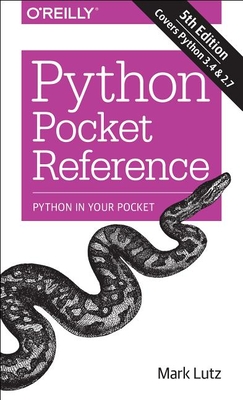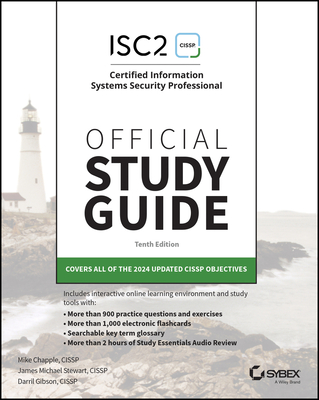MongoDB, Express, Angular, and Node.js Fundamentals Training in Toronto, Canada
Enroll in or hire us to teach our MongoDB, Express, Angular, and Node.js Fundamentals class in Toronto, Canada by calling us @303.377.6176. Like all HSG
classes, MongoDB, Express, Angular, and Node.js Fundamentals may be offered either onsite or via instructor led virtual training. Consider looking at our public training schedule to see if it
is scheduled: Public Training Classes
Provided there are enough attendees, MongoDB, Express, Angular, and Node.js Fundamentals may be taught at one of our local training facilities.
|
We offer private customized training for groups of 3 or more attendees.
|
||
Course Description |
||
| Taking control of the MEAN stack and getting familiar with different JavaScript technologies during the process will transform you into a full-stack JavaScript developer. MongoDB, Express, Angular and Node.js Fundamentals shows you how to develop highly scalable, asynchronous, and event-driven APIs quickly with Express and Node.js. You'll be able to demonstrate the full-stack skill by building two full-fledged MEAN applications with the user authentication feature from scratch.
Course Length: 2 Days
Course Tuition: $790 (US) |
||
Prerequisites |
|
| Solid understanding of JavaScript along with at least two years of software development work. | |
Course Outline |
|
Lesson One: Introduction to the MEAN stack
Starting with a brief introduction to the MEAN architecture, we will look into the programing model of Node as well as some important features, and the newest version of Angular (version 7). At the end of this lesson, the first lesson activity shall be aimed at building a Node server for the blogging application.
MEAN Architecture Demystification
Getting Started with Node
Activity 1: Creating an HTTP Server for a Blogging Application Understanding Callbacks, Event loop and EventEmitters in Node
Understanding Buffers, Streams and Filesystem in Node
Activity 2: Streaming Data to a File
Lesson Two: Developing RESTful APIs to perform CRUD operations
After the basic foundation has been set in the first lesson, we will proceed to get started with MongoDB Atlas and the Express application framework. We will not only learn how to perform different operations on MongoDB Atlas but also learn the Express application functionalities. At the end of this lesson, the lesson activity will wrap up the backend development for our sample application by creating a RESTful API for our sample application.
Getting Started with RESTful APIs
Getting started with MongoDB Atlas
Activity 3: Connecting the Node Application with MongoDB Atlas
Getting Started with Express
Activity 4: Creating Express API Route and Controller
Activity 5: Testing Fully Functional RESTful API
Lesson Three: Beginning Frontend Development with Angular CLI
After setting a good foundation in the first lesson and developing a backend service in the second, we will proceed further to client-side development with Angular 7.0 (the latest angular version). We will start the front end development by getting started with Angular. Application logic for our sample application will be written.
Getting Started with Angular CLI
Using Components, Directives, Services, and Making HTTP Requests in Angular
Activity 6: Designing the Frontend and Components for the Blogging Application
Activity 7: Writing Services and Making HTTP Request Calls to an API
Understanding Angular Forms and Routing
Activity 8: Creating a Form Application Using the Reactive/Model-Driven Method
Activity 9: Creating and Validating Different Forms Using the Template and Reactive Driven Method
Activity 10: Implementing a Router for the Blogging Application
Lesson Four: Understanding MEAN Stack Security
This lesson begins with a skim over MEAN's architecture and workflow. We shall dive into Authentication using MEAN and also revisit backend development with Node. Later in this lesson, we shall learn how to create Data Schema, configure Passport, a Node module that simplifies the process of handling authentication in Express. We shall also learn how to create API endpoints for our application as well as how Express API generates JSON Web Token (JWT) for authentication.
Node Security and Best Practices
Node Application Authentication with JSON Web Token (JWT)
Activity 11: Securing the RESTful API
Node Application Authentication with Passport
Activity 12: Creating a Login Page to Allow Authentication with Twitter Using Passport Strategies
Lesson Five: Angular Declarables, Bootstrapping, and Modularity
In the lesson, we will be implementing the frontend of our sample application. We shall learn how Angular store and validate JSON Web Token (JWT) in order to maintain the user's session, displaying protected views and how Angular routing works. Lastly, we shall briefly learn how to implement HttpClient and also how to transport output using Pipes in Angular.
Using Inbuilt Pipes, Custom Pipes, Custom Directives, and Observables
Activity 13: Communicating Between Two Components Using Observable Angular
Bootstrapping and Modularity
Activity 14: Creating a Lazy Loaded Application
Lesson Six: Testing and Optimizing Angular Applications
In this final lesson, we will be wrapping the frontend development of our sample application. Firstly, we will be learning how shared module and lazy loading feature is used in Angular. Later in this course, we shall learn how element can be animated and also how unit testing is carried out in Angular. This lesson will be wrapped up with the overview on the new features in Angular.
Angular Animations and Latest Angular Features
Activity 15: Animating the Route Transition Between the Blog Post Page and View Post Page of the Blogging Application
Optimizing Angular Applications
Testing Angular Applications
Activity 16: Performing Unit Testing on the App Root Component and Blog-Post Component
Overview on the new features in Angular
|
Course Directory [training on all levels]
Technical Training Courses
Software engineer/architect, System Admin ... Welcome!
- .NET Classes
- Agile/Scrum Classes
- AI Classes
- Ajax Classes
- Android and iPhone Programming Classes
- Azure Classes
- Blaze Advisor Classes
- C Programming Classes
- C# Programming Classes
- C++ Programming Classes
- Cisco Classes
- Cloud Classes
- CompTIA Classes
- Crystal Reports Classes
- Data Classes
- Design Patterns Classes
- DevOps Classes
- Foundations of Web Design & Web Authoring Classes
- Git, Jira, Wicket, Gradle, Tableau Classes
- IBM Classes
- Java Programming Classes
- JBoss Administration Classes
- JUnit, TDD, CPTC, Web Penetration Classes
- Linux Unix Classes
- Machine Learning Classes
- Microsoft Classes
- Microsoft Development Classes
- Microsoft SQL Server Classes
- Microsoft Team Foundation Server Classes
- Microsoft Windows Server Classes
- Oracle, MySQL, Cassandra, Hadoop Database Classes
- Perl Programming Classes
- Python Programming Classes
- Ruby Programming Classes
- SAS Classes
- Security Classes
- SharePoint Classes
- SOA Classes
- Tcl, Awk, Bash, Shell Classes
- UML Classes
- VMWare Classes
- Web Development Classes
- Web Services Classes
- Weblogic Administration Classes
- XML Classes
Business Training Courses
Project Managers, Business Analysts, Paralegals ... Welcome!
Upcoming Classes
Gain insight and ideas from students with different perspectives and experiences.
- Object-Oriented Programming in C# Rev. 6.1
17 November, 2025 - 21 November, 2025 - Introduction to Spring 6, Spring Boot 3, and Spring REST
15 December, 2025 - 19 December, 2025 - ASP.NET Core MVC (VS2022)
24 November, 2025 - 25 November, 2025 - Python for Scientists
8 December, 2025 - 12 December, 2025 - Fast Track to Java 17 and OO Development
8 December, 2025 - 12 December, 2025 - See our complete public course listing






